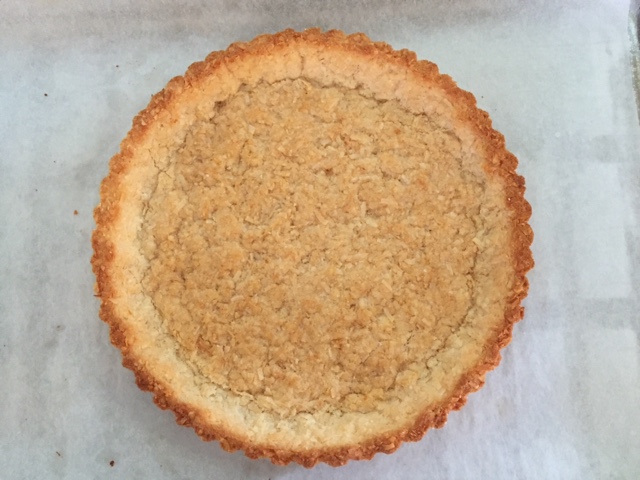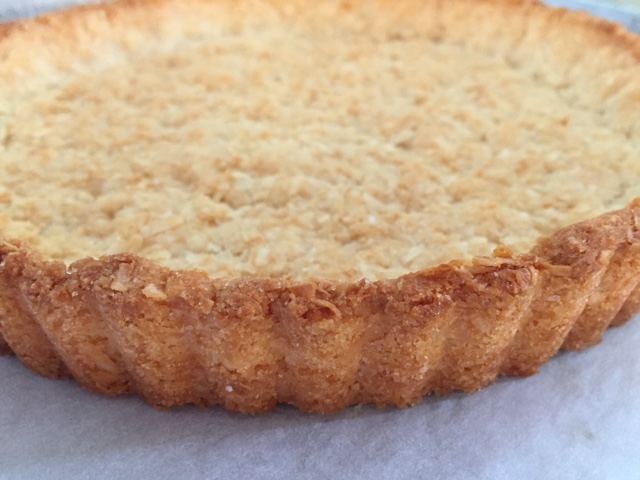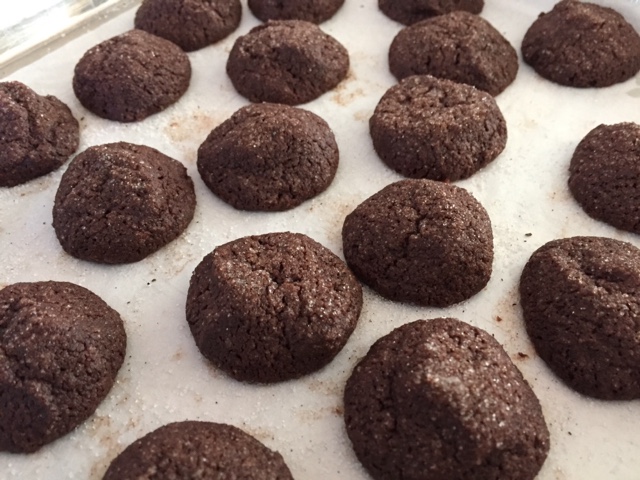Reine de Saba
/Reine de Saba (Queen of Sheba) is essentially a chocolate almond torte and reportedly one of Julia Child’s first French gateau experiences - one that helped launch her into what would become a fantastic culinary adventure for life.
There are a bevy of different recipes out there for this one - most involve melting dark chocolate with butter, separating the egg whites and yolks, whipping the whites with a portion of the sugar to create a meringue, adding almond flour along with your choice of a small amount of all purpose flour or alternate flour like teff and folding everything together.
After my review of a half dozen or so recipes I ultimately landed on two of Alice Medrich’s - one from “Seriously Bittersweet” and one an alternate grain version from “Flavor Flours” which uses teff flour (gluten free!) in place of all purpose. Dense, dreamy, creamy yet light and chocolate-y all at the same time. That woman KNOWS her chocolate boy oh boy! Thanks A.M.
In “Seriously Bittersweet” A.M. dedicates a page to the “versatility and the role of ingredients” in creating these chocolate gateaux. She says “This type of torte is essentially an extremely buttery chocolate egg custard given texture with ground nuts and maybe a little flour. The basic ingredients are standard, but the quantity of each is almost infinitely flexible”.
She goes on to explain how the eggs (whether separated or not) help bind the rest of the ingredients whether you use 3, 4 or 5 eggs; how even a small amount of flour adds a smoothness to nutty tortes by affecting the way the eggs cook; how nuts can be used un-blanched , blanched, toasted or raw as well as in different quantities - a lower measure of nuts will give you a less cake-y and more mousse-y custard like torte, while whole ground nuts will provide a coarser texture than more finely milled nut flours.
Butter adds flavor, contributes to texture and provides moisture as well. Brewed coffee or different liqueurs or spirits like rum, bourbon, kirsch, Frangelico or Amaretto add flavor too. So many possibilities.
While each of these two recipes uses practically identical ingredients, the teff version (below) keeps the eggs whole and everything is blended together in one bowl - easy-peasy. You can even use a hand held mixer. Ms. Medrich points out that the secret to a fluffy batter for this one is chocolate not too warm, butter not too soft and eggs cold!
Here goes!
Heat the oven to 375ºF. Butter the bottom of an 8” springform pan then line the bottom with parchment.
Mix 70 g almond flour with 35 g teff flour and set aside.
Melt 170 g dark chocolate (70% recommended) over a barely simmering water bath, set aside and let cool to lukewarm.
Have 150 g sugar, 140 g unsalted cubed butter softened (not too!), 1/8 teaspoon salt and 4 cold large eggs at the ready.
Add almond-teff flours, sugar, butter chunks and salt to the chocolate and beat on medium with the hand held mixer until well blended and the batter thickens and lightens in color.
Beat in the eggs one by one then beat on high speed for a minute or so until fluffy and lighter in color, like chocolate frosting.
Scrape batter into the prepared pan and spread evenly.
Looks like chocolate frosting to me!
Bake 30-35 minutes until a tester inserted in the center comes out with a few moist crumbs.
Slide a thin knife or small offset spatula around the sides to allow the cake to sink slightly as it cools. Cool completely.
For the more traditional version using all purpose flour, the process involves separating the eggs and whipping them separately with portions of the sugar. Rather than almond flour, whole natural almonds are processed with the flour to a coarse texture, giving the end result a toothy, nutty-textured chew.
For the second version heat the oven to 375ºF, butter the bottom of an 8” springform pan and line it with a round of parchment paper.
Place 170 g coarsely chopped chocolate (66-70%) and 140 g unsalted butter in a medium heatproof bowl set into a wide skillet with barely simmering water. Stir periodically until melted then, off the heat, stir in 3 tablespoons brandy (optional - I added some vanilla extract instead), 1/8 teaspoon almond extract and 1/8 teaspoon salt. Set it aside.
Pulse 70 g unblanched whole almonds and 15 g all purpose flour in a food processor to a cornmeal-like texture. Set aside.
Separate 4 large eggs: in a large bowl whisk the yolks with 100 g sugar until well blended then stir in the chocolate mixture.
In a clean, dry bowl whisk the whites and 1/8 teaspoon cream of tartar on medium to soft peaks then sprinkle in 50 g sugar and beat at high speed to stiff but not dry peaks.
Now place 1/4 of the egg whites and all of the nut/flour mixture on top of the chocolate batter and fold them in with a large rubber spatula. Fold in the remaining egg whites.
Combining everything
Spread the batter into the prepared springform pan. Can you see the nut particles?
Ready for the oven
Bake 25-30 minutes until a tester inserted into the center is still moist but one inserted ~1.5 inches from the edge is almost clean (whoa - talk about nuance!)
All baked up
A light dusting of confectioner’s sugar sets off the dark chocolate nicely.
As usual, Steve and I did our mandatory taste test. We first tried the teff version which had a great chocolate flavor and smooth, creamy texture. But we gave the nod to the second version, enjoying the melt-in-your-mouth custard like center and the mouth feel of the coarser nuttier texture. Deelish!
Served with a honey-tinged Scandinavian yogurt and some fresh strawberries it was, in my estimation, superb (even though Mr. Steve is not a big yogurt fan).
The longer you bake, the more you begin to realize how much variation and play can happen from recipe to recipe. Even though we accept the fact that not everything always turns out as we had hoped, it’s a beautiful thing to try your own version and make it fun!
Happy summer!!

























